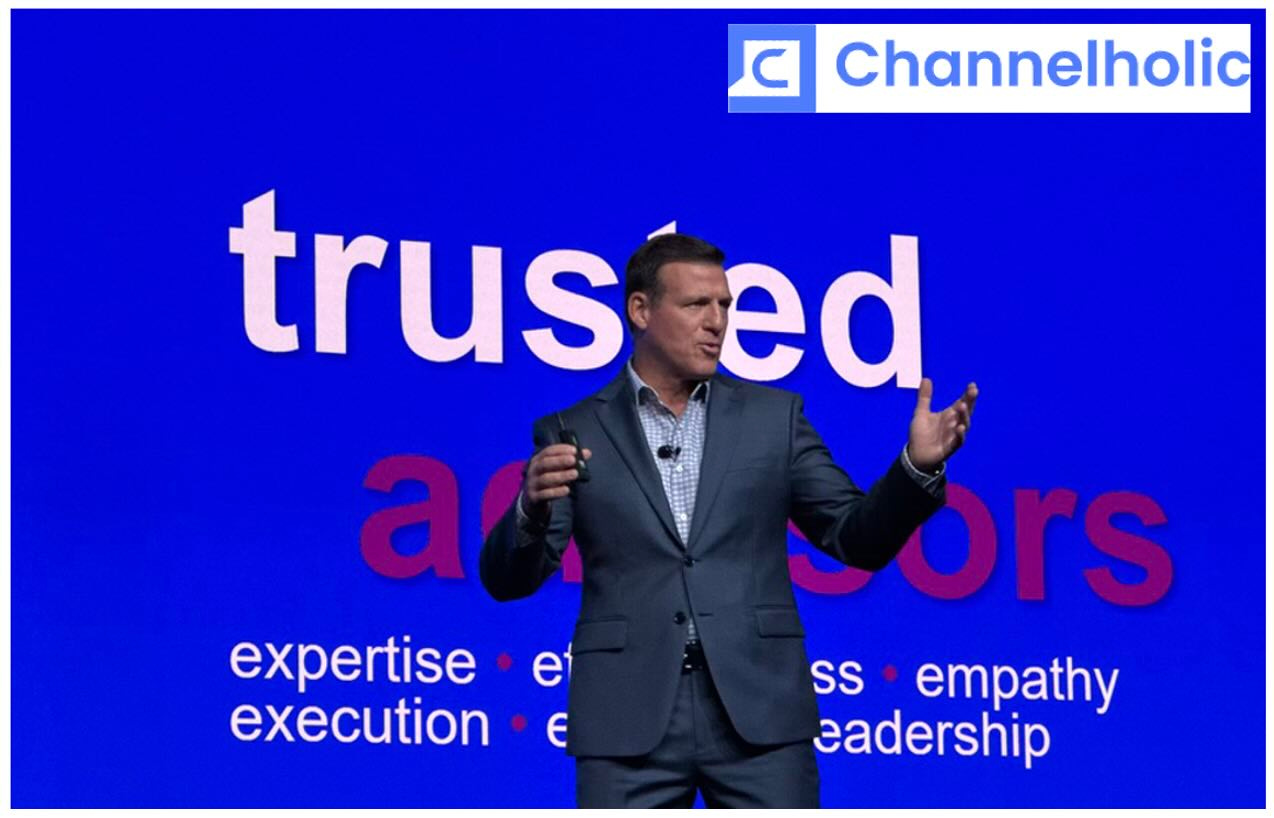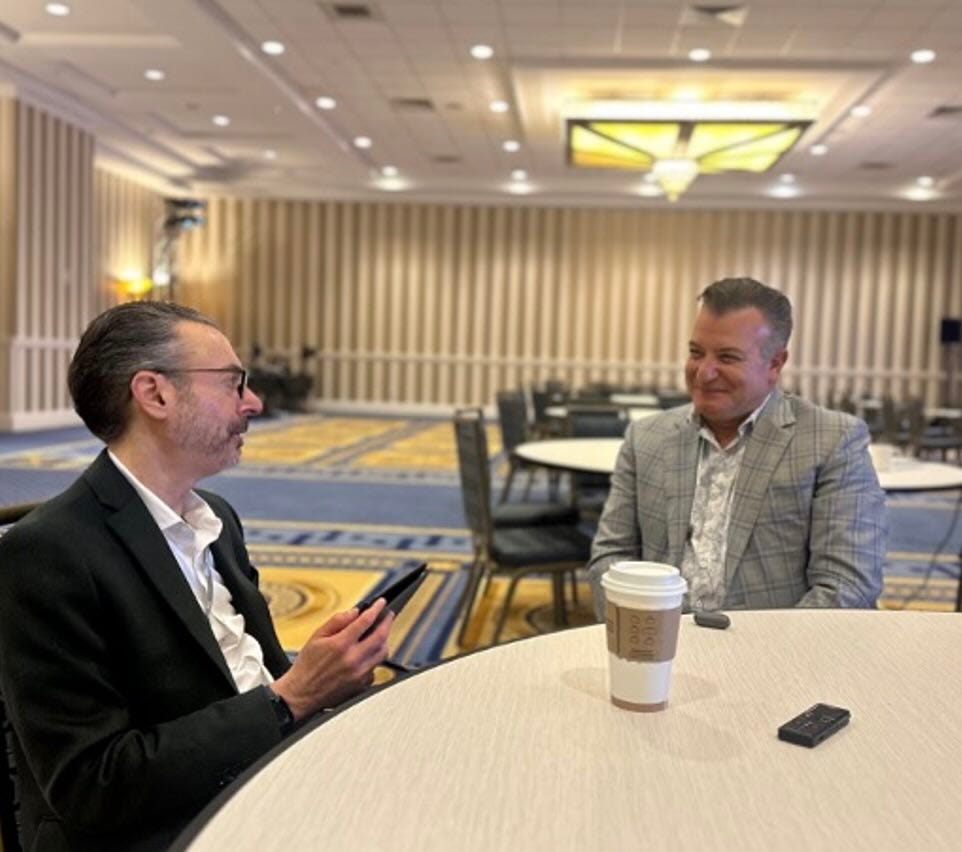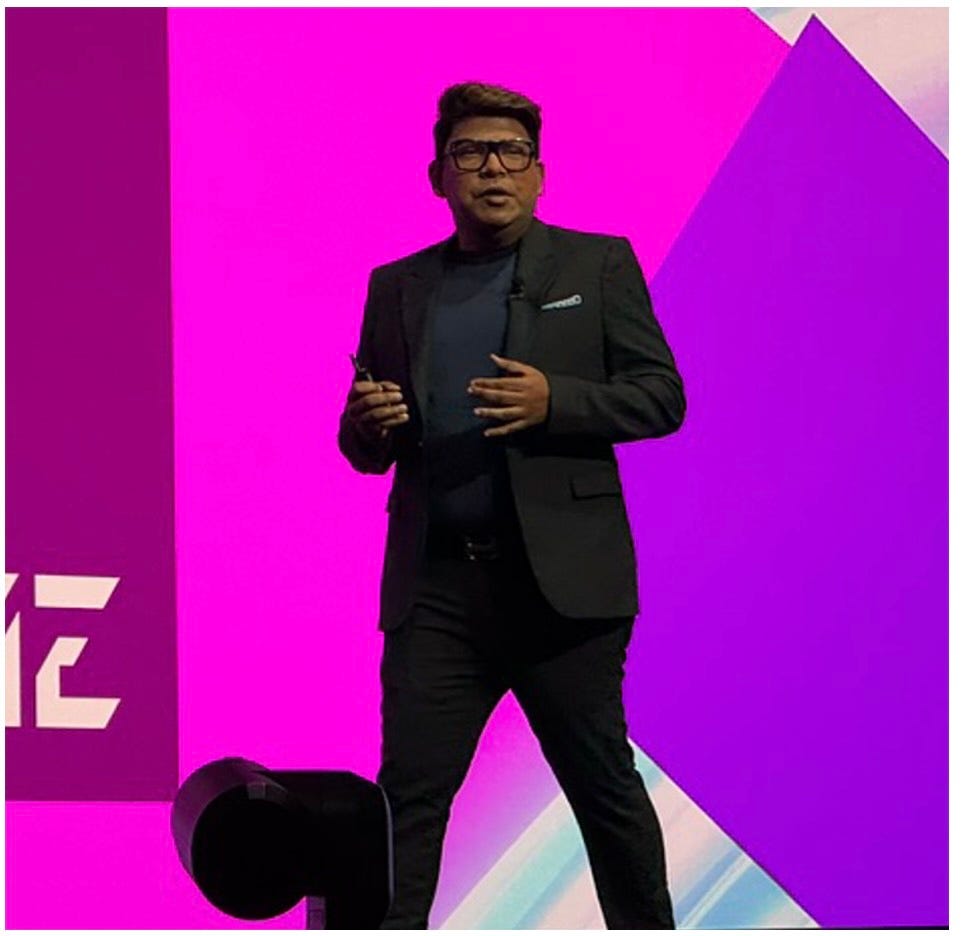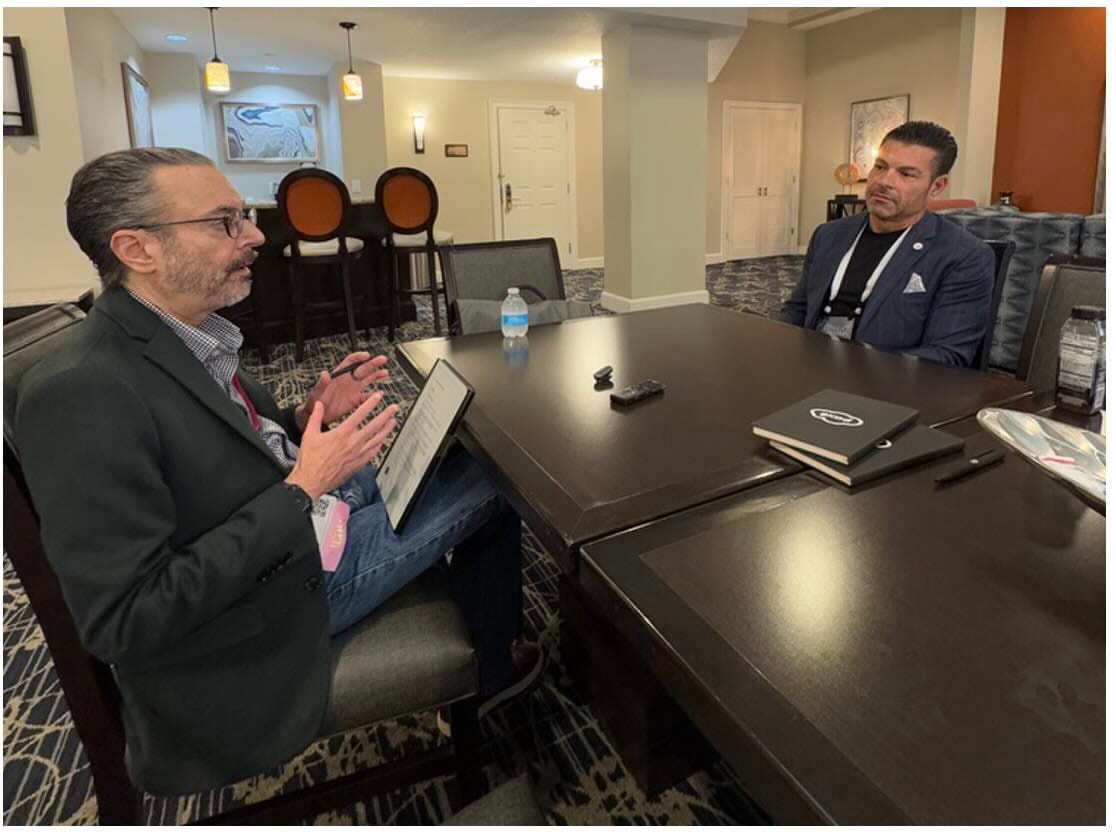Distribution is Dead
And long live the intelligent platform, says Ingram Micro. Plus: Why Ingram and Pax8 respectfully disagree on agentic marketplaces and why relationships still matter in the AI era.
Note: Because one is never enough of anything good, I attended two tech conferences last week. The first, Ingram Micro’s aptly named ONE show, is the subject of this week’s post. I’ll dive deep on the second, ConnectWise’s IT Nation Connect show in Orlando, in my next post.
Let me tell you what the people who run Ingram Micro do agree about before I tell you what they don’t. They do agree that they’re not a distributor anymore.
Or rather, not just a distributor. “We’ve gone beyond distribution,” said Bill Brandel, the company’s EVP and president for North America, during a conversation at Ingram’s ONE conference outside Washington D.C. last week. “Distribution is table stakes.”
What they don’t agree about—yet, at least—is what to call themselves instead.
“I truly believe we are a solution provider now,” Brandel says.
“We are a B2B platform tech company,” counters Sanjib Sahoo, who was named president of Ingram’s Global Platform Group in January. Or perhaps “B2B platform ecosystem,” he adds. But really, who’s counting?
“We haven’t thought about the name,” Sahoo says.
What they have thought about, long and hard and for a good three years now, is what makes companies like Ingram relevant to partners. In the old days, a big part of the answer was software. But businesses don’t need distributors to get software anymore now that they can buy it directly from their favorite product-led growth vendor or through an online marketplace.
Per Omdia, in fact, businesses will purchase $45 billion worth of software from hyperscaler marketplaces this year, rising to $163 billion by 2030, numbers big enough, the analyst believes, to drive 20% of distributors to sell, merge, or exit the market altogether by 2028.
“So what is the future role of a distributor?” Sahoo asks.
It’s a question many others are asking as well, and answering in varied ways. Pax8, for example, has embraced a kind of if-you-can’t-beat-’em-join-’em strategy, redefining itself as a marketplace—or rather marketplace of marketplaces—with deep resources designed specifically and solely for MSPs. Value-added distributors like Exclusive Networks and “value-added marketplaces” (my term) like Sherweb, by contrast, see in-depth expertise and professional services that you can’t get from a hyperscaler as their way through.
Ingram Micro’s answer, while perhaps hard to label, is built around a new role it’s carving out for itself at the heart of the technology value chain.
“What it ultimately comes down to is how do we connect the channel, this ecosystem between us, you, your end users, and our vendor partners in ways that have never been done before,” explains Ingram Micro CEO Paul Bay (pictured above).
And ways a hyperscaler can’t replicate, he notes, because all they have is software. “That’s a critical piece of the technology that’s being deployed, but it’s only one piece, and we’re focused on the complete solution,” Bay says.
Complete solutions, he adds, are what businesses need but can’t get without hardware and services in addition to software. Ingram’s strategy for outflanking the hyperscalers and fueling another decade of growth is to be the destination of choice for aggregating all three elements by functioning, per Sahoo, as “a platform with intelligence delivering outcomes, not a distributor.”
Let’s unpack that a little. Businesses buy solutions but they want outcomes, usually tied in some way to making money or saving it. Realizing an outcome requires a just-so combination of software, hardware, and services tailored to the unique needs of a particular business in a particular industry and place. Good luck figuring out what that is on your own, Sahoo argues, at a time when hundreds of thousands of vendors are selling millions of products.
“If I ask you to tell me the seven layers of a stack today and which vendor goes with which vendor, you can’t,” he says. “It’s changing every day.”
Hence the large sums Ingram has spent across three years on Xvantage, the platform piece of Sahoo’s formulation, which is designed to simplify the complex task of assembling precision-tailored solutions. Ingram won’t say how large those sums have been except to remind you that it spent $600 million at an earlier phase of its evolution on the infrastructure underlying its cloud business, implying that it’s willing to spend just as much building its platform of the future if that’s what it takes.
Which it might, because Xvantage isn’t just a platform, Sahoo emphasizes. It’s a “platform with intelligence” of both the artificial and business kind that draws on more than 30 patents, 400 models, and 32 million lines of code to mine actionable insights from four petabytes of carefully cleaned and labeled data accumulated over 45 years.
Building all that has been expensive and time-consuming work, but it’s already paying meaningful dividends. According to Brandel, in fact, the Xvantage-based Intelligent Digital Assistant the company launched earlier this year has tripled success rates on current and potential deals.
“We’re able to provide visibility to our partners on when opportunities are ready to close,” Brandel (pictured) says. “We’re also able to give them insights and recommendations to show them how to scale that opportunity and maybe add to that opportunity.”
The result has been what Ingram says is hundreds of millions of dollars’ worth of incremental revenue per quarter for two quarters straight—including one in which a costly and heavily publicized breach occurred.
“That same quarter where we had a cyberattack we still grew above market,” Sahoo says.
Xvantage goes agentic
The biggest announcement Ingram made during ONE points the way to how the company plans to extend that streak. Called the Sales Briefing Agent, it’s the first agentic addition to Xvantage and designed to give Ingram’s account managers real-time information about future sales based on everything partners have done in the past.
“I can know what quotes didn’t get done and what you have done with us, combine all that, and create an opportunity for you,” Sahoo (pictured) says. “Very soon,” he adds, partners will be able to create opportunities on their own as well.
“We’ll take that agent and give it to you as a customer,” Sahoo says.
Which may be the most strategic piece of Ingram’s entire vision. Today, the company interacts most often with the workaday folks who place orders. A platform with intelligence that delivers outcomes and exposes money-making opportunities, Ingram believes, will get it talking to CEOs instead.
“More and more our thought is if we show up that way, we will drive share,” Sahoo says.
Pax8 believes in agentic marketplaces. Ingram Micro doesn’t.
Funny thing about Ingram and agents, though. It sees a bright future for its partners in using them. It sees no future, for them or itself, in distributing them.
“You cannot distribute agents, because agents are custom built” around very specific data, software, and use cases, Sahoo says. “There are no ready-made agents.”
If he’s right, it’s a problem for Pax8, which in June announced its intention to build an entire marketplace full of ready-made agents. Chance Weaver (pictured), the company’s VP of AI adoption, says he’s not.
“I don’t agree with that at all,” he says. “There’s going to be a huge need for agentic marketplaces.”
As his future-tense verb choice indicates, it’ll be a bit before that need materializes. In the six months since he joined Pax8, Weaver has interviewed some 600 partners. Only 13 are selling anything agentic to customers today.
“A lot of MSPs are interested in it,” he says. “It’s a very small percentage that are actually doing it.”
Part of Weaver’s job is delivering the education and resources needed to grow that percentage. Eventually, he argues, a critical mass of managed service providers (or managed intelligence providers, as Pax8 prefers to call them) will have the skills to build an agent for one of their clients in, say, the healthcare industry.
“If you build an agent for one company, obviously that is going to fit across multiple customers in your customer base,” Weaver observes, noting that the same could be true of someone else’s customer base as well.
“You can build an agent and sell it,” he says. “Another MSP that’s servicing a couple of healthcare clients now doesn’t have to go out and build an agent. They can go and take a look at all of these agents that healthcare-focused MSPs have built.”
The same principle, he continues, works horizontally as well as vertically. “Everyone has operations. Everyone has HR. Everyone has finance,” Weaver says. MSPs who successfully construct an agent in one of those fields for one of their clients can make extra income selling their intellectual property to others.
There aren’t likely to be many such MSPs, he concedes. “There’s going to be a lot more buyers than builders,” Weaver says. “Becoming a builder is very complex. But the builders are the ones that will seed those agent stores and the base of buyers, since it’s going to be significantly larger, will consume that.”
That belief and Ingram’s conviction that no such future is practical are far enough apart to suggest that only one company will be proven correct. Whoever it is stands to make a great deal of money. Whoever it isn’t stands to lose, or miss out on making, an equally great sum.
Don’t forget the people
I’ve devoted a lot of time in this post to Xvantage, because Ingram did as well last week. But as we’ve written before (and as TD SYNNEX would agree), technology is but one part of a critical one-two combo that includes people as well.
“Relationships still matter at the end of the day,” said Bay during a keynote at ONE.
Which is why the other big announcement last week, on top of the Sales Briefing Agent launch, was the expansion of Ingram’s Trust X Alliance community from seven countries to eleven on the way toward an eventual goal of 20 countries and 1,000 members worldwide by 2027. Like Xvantage, that too is a strategic investment for reasons Jennifer Anaya (pictured), Ingram’s senior vice president of global marketing, laid out in an interview recorded for MSP Chat, the podcast I co-host.
“People buy from people,” she said. “You can use a lot of technology to make people more effective, to be able to help all of us be a lot smarter perhaps in how we’re managing those customers or smarter in the way that we’re able to deliver on things, but at the end of the day the service delivery, the quality, the experience comes from relationships.”
You’ll hear much more from Anaya on relationships, communities, and beyond, plus a separate conversation with Cheryl Rang, Ingram’s VP of technology solutions, in an upcoming MSP Chat episode. In the meantime, there’s plenty of other great material to check out in previous episodes here.
Also worth noting
WatchGuard has added PSA integrations and launched a new unified agent for all of its security services.
WatchGuard has also named ex-Kaseya COO Joe Smolarski its new CEO.
Bitdefender has released data lake security solutions designed to unify security telemetry from multiple tools into a single, intelligent platform.
SentinelOne has introduced an AI-powered, Google-integrated managed services suite combining elite human expertise with agentic AI.
Fortinet has launched an AI data center security solution offering quantum-secure protection for AI models, data, and infrastructure at scale.
Guardz has embedded Check Point’s Harmony Email security solution into its unified security platform for MSPs.
Keeper Security has introduced a kernel-level endpoint security product designed to defend Windows devices against memory-based attacks and credential theft.
Kaseya has implemented FIPS 140-3 certified cryptography across the SaaS versions of its VSA 10 and Datto RMM platforms.
ESET has integrated its PROTECT Platform with ConnectWise RMM.
EasyDMARC has launched an AI-driven lead generation and sales enablement tool for its DMARC compliance solution.
Zscaler has acquired AI security vendor SPLX to add AI asset discovery, automated red teaming, and lifecycle governance capabilities to its Zero Trust Exchange.
Hornetsecurity has equipped its Teams Protection offering to detect, warn, and automatically remediate malicious URLs in Microsoft Teams chats.
Forescout has launched eyeSentry, a comprehensive cloud-native exposure management solution.
Infoblox has unveiled integrations and capabilities designed to accelerate modernization, automation, and protection of hybrid, multi-cloud AI-ready networks.
Cisco has added multi-customer management capabilities to its Security Cloud Control platform for MSPs.
Cisco has also added new incentive bonuses, AI specializations, and training resources to its 360 Partner Program.
ConnectSecure has introduced AI-powered vulnerability management reports that prioritize risks, automate analysis, and accelerate remediation for MSPs.
Vicarius has added its vRx solution to the Pax8 Marketplace.
Veeam has integrated its backup platform with Microsoft Sentinel.
Arctic Wolf has acquired UpSight Security to add AI-powered ransomware prevention and rollback to its Aurora endpoint solution.
CyberArk has unveiled a new Secure AI Agents solution that extends identity security and privilege controls to autonomous AI agents that badly need them.
Cyn.Ai has launched an autonomous agent designed to detect and remove phishing, impersonation, and fake domain threats automatically.
Moovila has launched Project Hub, a library of starter project templates for MSPs.
The 20 MSP has acquired its 42nd, 43rd, and 44th MSPs.
Schneider Electric has launched an advisory service combining consulting, software, and project implementation.
HPE has introduced the Partner Ready Vantage Program, a unified and modernized channel framework designed to integrate all HPE partner programs.
Zoom has added more flexible tracks and a point-based rewards system to its Zoom Up Partner Program.
Google has added new capabilities to Vertex AI Agent Builder, its open platform for creating, scaling and governing agents.
SnapLogic has added new agent execution, MCP protocol, and governance features to its Agentic Integration Platform and launched a tool designed to reduce legacy migration costs by up to 80%.








